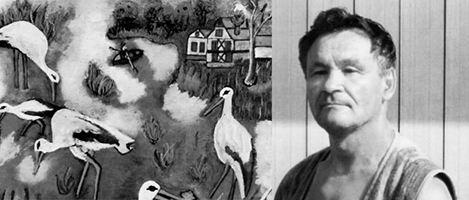
Belykh Alexandr A. was born in the family of geologists in the village of Staraya Kurba, the Zaigrayevo district, the Republic of Buryatia. From the age of 14 to 36, he lived in Novosibirsk, first at a boarding school, then worked as a TV repair technician. In 1978-88, he worked as an artist-designer in Batumi in a winter period, and as an assistant in geological parties in summer time. In 1991, he completed a course in Extramural People’s University of Arts (ZNUI). Now he lives in the Vladimir region.
The artist’s creative works feature a vivid visionary character.
His favorite genres are portrait (usually from photos), landscape with animals or just animals, genre scenes for love and erotic stories, historical and mythological pictures. He worked as an artist-designer in Ulan-Ude, and this let him develop skills of pictorial craft. Belykh does not merely draw, he composes poetry, dramatic works, or sings in the choir. The artist is an indefatigable researcher. When making paintings on historical topics, he studies relevant literature, costumes, but everything is transformed in his own way, only he sees the credibility, which he aspires to achieve. The spectator in all genres produced by Belykh is struck by the expression of forms, tension, and dynamics. He has an extraordinary sense of colour. Almost monochrome, gray-blue works, and multicolor large compositions differ in harmonic restrained gamma. A special place belongs to scenes with wild animals - lions, tigers, and leopards. This results from cabaret posters and rugs, which may have had an impact on the artist, when he lived in Batumi. But the animals of Belykh personify the untamed passionate feelings of the artist himself. By their naturalness and non-aggressiveness, they remind animals in the paintings of Henri Rousseau. Portraits of Belykh embody his ideas about male and female beauty, spirituality, and at the same time often turn out to be unexpectedly psychological. His love stories are usually explained by long and not completely understandable stories, composed or heard by the artist. They are both didactic and moralistic. The artist also sang in the choir and was a member of a political party.